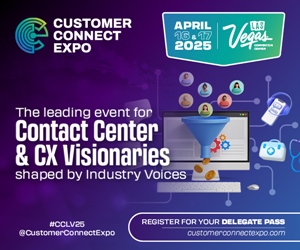
Learning and development professionals in the customer service and retail industry are experiencing an evolution in how they engage their employees in ongoing job training.
Hours of sitting through slide presentations are becoming increasingly obsolete as top name brand stores are exploring how they can utilize Immersive Learning to ensure their customer-facing employees are prepared to handle a variety of challenges on any given day.
Immersive Learning utilizes the power of experience through Virtual Reality (VR) to simulate a modern working environment. This allows employees to interact with the training material in a safe and engaging environment that helps them to practice critical skills on demand.
What may be most surprising about Immersive Learning is that it is not a new idea. It’s an advanced approach to learning that is based on decades of neuroscience research. This learning modality operates under the notion that the brain treats learning experiences in VR the same as it would in the real world. This is what makes VR training more memorable and realistic than other less interactive learning techniques. An employee training built in a VR environment gives learning and development professionals a clear indication of how their employees will perform once they come into contact with real customers.
Measure the Success of Soft Skills Training with VR
Soft skills are the very core of the customer service industry. These are the most critical, yet intangible skills that often make the biggest difference in whether or not the customer has a positive experience. This can include the employee’s approach to teamwork, communication, punctuality, attitude, motivation, manners, and more.
Research shows that companies are facing a growing gap in soft skills training. Employers are increasingly frustrated with employees who spend more time staring into their phones rather than focusing on customer service. They want employees who are able to take direction from supervisors and work cooperatively with colleagues to achieve a goal. Yet, these skills are generally left off of the job description and are quite difficult to assess from looking at an applicant’s resume alone. So how is VR being used to train store employees?
Walmart has been able to create their own data around the use of empathy for their customer service associates in its beKIND training program. The program was designed to infuse more kindness into associate training as a way to help de-escalate recurring issues on the retail floor. Associates find that they are able to grow their confidence levels while being given constructive feedback about their performance in each training scenario.
One of the biggest challenges of any learning and development professional is measuring how much trainees are learning. VR can help make this task easier by tracking:
- Demonstrated proficiency in completing a task in the simulated environment
- Number of interactions in the training module
- Training frequency and completion
Build Company Culture with immersion
As a retail manager, there may be times when you experience a conflict between needing people to serve customers on the retail floor and spending time in training activities. Both are critical to the success of any retail outlet. However, how does a company minimize the time spent in training while maximizing the opportunity for new employees to embody the values of the company?
What is most promising about training customer service employees using VR is the opportunity to standardize the learning experience while also creating a personalized learning event. Each training experience is an immersive experience that allows employees to feel the emotions of working through complex tasks. As trainees become active participants in each learning session, they are able to internalize the key concepts related to company culture while becoming comfortable with how to apply the knowledge in real life situations.
Natural and organic grocery store chain, Sprouts, experienced a hiring spike due to the pandemic. This necessitated an efficient training system to teach new employees company core values and customer service techniques. Immersive Learning was key to developing onboarding that was scalable, standardized, and impactful for all. It also helped reduce time spent training by 81% without sacrificing effectiveness. New hires could get to work faster and feel more confident.
New team members who mastered job-specific competencies continually outperformed their peers in every key performance indicator using VR training. Existing employees were also able to benefit from VR training through a refresher course that helped them improve upon skills that may have been missed during new hire orientation.
How Can You Utilize Immersive Learning and VR for Your Training?
What data points are missing from your customer service training outcomes? What do you need to know in order to improve the customer experience? Immersive Learning is a game-changer for the customer service and retail industry because it allows companies to measure intangible outcomes that contribute to a store’s bottom line. No matter your line of service, VR can help your employees to be more confident and self-aware communicators who are excited to contribute to the improvement of company culture.




